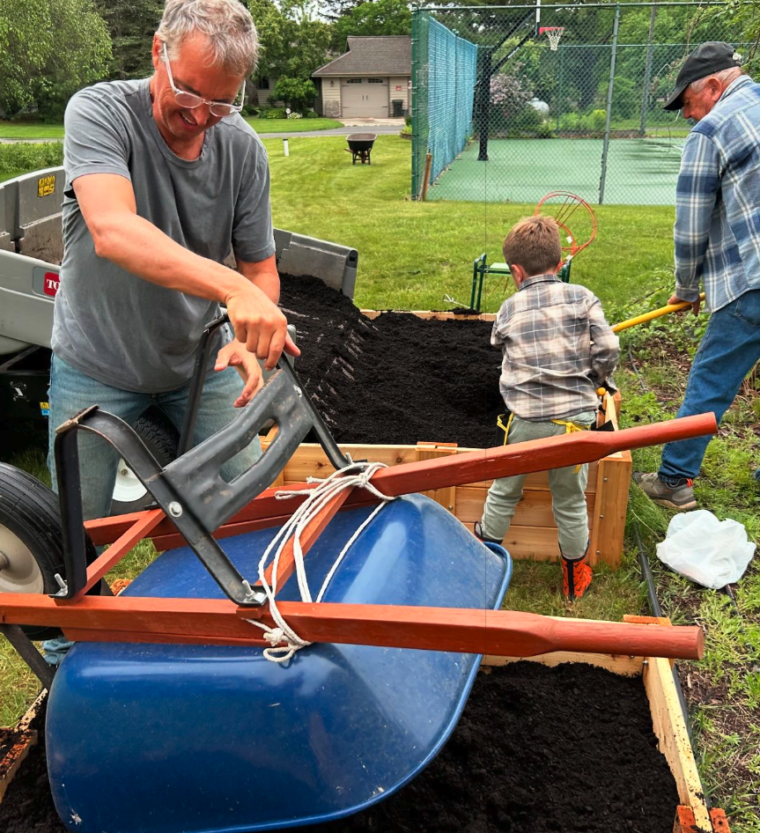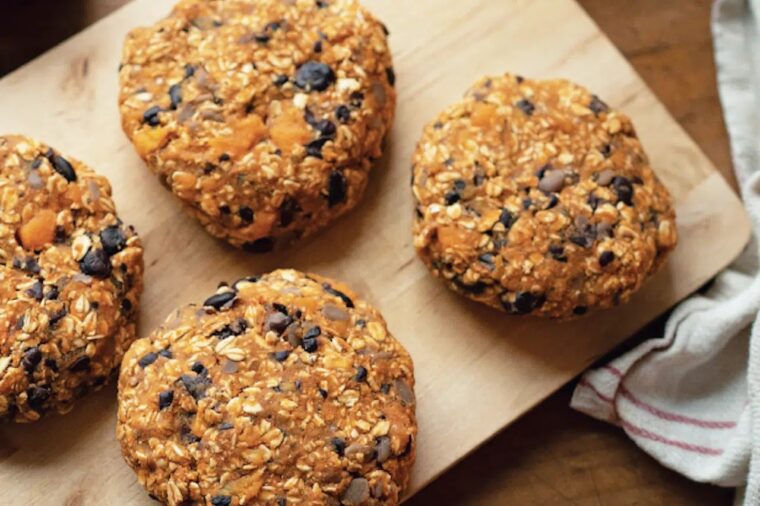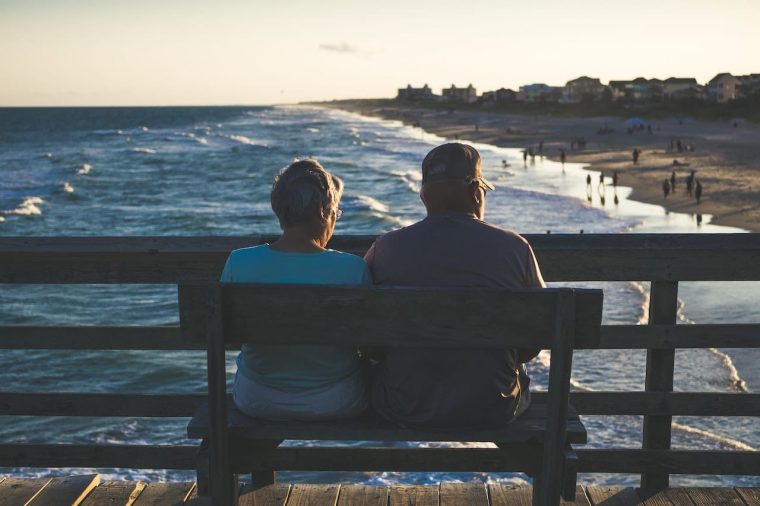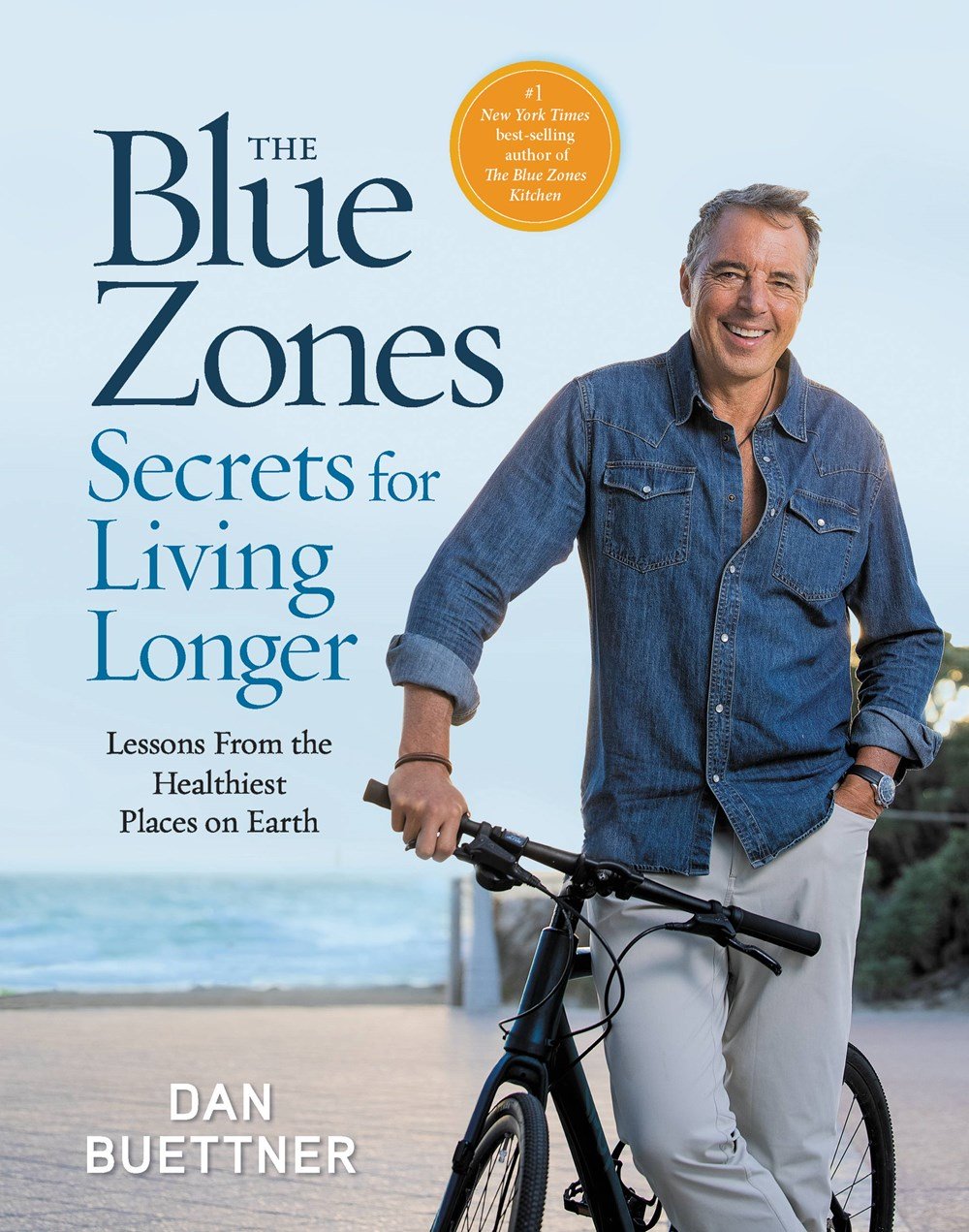A lot of the healthy decisions we can make seem, at first, like forms of compromise. We need what we need, but we also want what we want, so we try to find ways to satisfy both of those impulses.
This can be tricky, though, particularly when you’re trying to negotiate between things that seem diametrically opposed.
Take, for example, what everyone seems to understand about salad: salad itself (i.e. the vegetables) is very nutritious, but salad dressing is really bad by comparison. In other words, it is normal for us to top a really healthy, nutritious food with a really unhealthy sauce (and bread)!
What’s going on here? What’s the right kind of compromise for a situation like this? How are we supposed to think or feel about this?
Gardening is another everyday healthy example. Gardening is how you grow the very freshest, most local produce possible… but you have to do manual labor in the dirt to get to all of the tasty fresh veggies later in the season. It’s easy to understand how anyone might enjoy the former, but harder to understand how green-thumb types genuinely enjoy the latter—how they seem to treat the eventual veggies as a lovely side effect and not, well, the entire point of their gardening efforts.
Part of the problem with the idea of “compromise” (as it applies to health decisions) is that we typically think of it as “halfway happy,” and we typically have the same lukewarm, glass-half-empty reaction to this idea as Eleven did in Stranger Things. In other words, we think that the parts we dislike are the “price” we have to pay for the parts we like, and that that’s just the way it is.
This might be true enough starting out, but over time and with practice, you tend to realize that the exchanges happening here don’t limit you to “halfway happy.” In the end, the parts you enjoy just tempt you to try and (eventually) enjoy other things as well; what seemed at first like a compromise was really just the slow closing of a loop.
To people with gardening experience, gardening is not the chore you perform to reap home-grown vegetables. It’s a hobby with its own rhythm and its own intermittent rewards, and gardeners have grown to appreciate more and more of the details over time.
It’s much the same basic principle with salad dressing: it is meant to complete the salad, to blend and balance all of the flavors, to lend a little bit of texture and help ingredients to stick together. It doesn’t have to be the “necessary evil” that makes salad palatable, and in fact, it doesn’t have to be “bad” at all.
There’s a lot more to say in this salad-dressing direction, so let’s jump straight into…

I talked last time about salad greens, how iceberg and romaine are just two of the least interesting options out there. Until you’re familiar with the spring mixes and arugulas and chards and other delicious, beautiful salad greens out there (many of them mild in flavor), you just won’t know the potential that salads really hold.
Today, I want to talk about salad dressing, salad’s second most essential ingredient but often the single biggest source of flavor… and also (per the intro above) the biggest source of confusion and misunderstanding.
So I want to clear up that big, common misunderstanding about salad dressing, then share a few pieces of practical advice on dressing your salads for maximum effect and minimal nutritional footprint. I’ll wrap up this little salad series next time with an informal explainer on the food science of salad dressing, with particular emphasis on the roles of fat and acid.
Let’s start by clearing up that big confusion about salad dressing.
Again, the two well-established facts go like so:
🅰️ Salad is good for you. It’s healthy and nutritious, and you can basically eat as much as you want because it’s veggies.
🅱️ Salad dressing, on the other hand, is bad for you. It’s not nutritious and, in fact, it’s loaded with all the things salad-eaters usually want to get away from, like fat, sugar, and extra calories.
This is not so much a misconception (something people get wrong) as a little paradox—a pair of well-established facts that everybody knows, but that most people don’t know how to reconcile in useful ways.
While there’s no immediate contradiction between these facts, their pairing creates a bit of a puzzle for us. We wonder:
💭 Does this mean salad is good without dressing, but bad with dressing? How am I “supposed” to think about this?
💭 Can you split the difference somehow, or do you basically have to pick between Healthy Salad and Tasty Salad?
💭 Is it worth trying to make my own dressing? If buying it at the store, should I bother with the low-fat or organic versions?
Here are four quick takes to get everyone on the same page:
Yes, it is obviously true that salad is nutritionally better than salad dressing, that you can’t really overdo it on salad greens and veggies but you CAN overdo it on salad dressing. Pretty easily, too.
Yes, the dressing is exactly where most “tasty salads” go wrong, including the fast-food salads whose calorie counts are as high as burger-combo meals not because of their veggies or even their proteins, but because of their dressings. Having said that…
No, this does NOT mean that dressing “cancels out” the nutritional benefits of a salad. Overdo it on dressing and you might consume too much fat and too many calories, but the most you’re “canceling out” at that point is your claim to a well-balanced meal. At least you’re still getting all of the nutrients in the salad itself, and that’s more than a lot of Westerners and burger-combo-meal-eaters can say.
The main reason it’s worth figuring out how to get dressing right for everyday salads is that it’s not just about curbing or avoiding “bad” stuff like fat. It’s also about helping you make sure you get the “good” stuff you need—all the vitamins and minerals and micronutrients in the greens and veggies—which is basically the whole point of dressing!
No, this does NOT mean that salad dressing is inherently “bad” or “unhealthy.” It might be inherently fatty insofar as it virtually always contains fat, but remember: fat is not always a bad thing! Within the limits of health and moderation, your body does need it!
The real culprit here is not dressing or fat, but excess. The problem is not the mere fact that dressing has fat in it, but the fact that dressing is an easy way to over-consume fat and, by extension, calories. Not to mention, of course, all of the artificial additives and crap they add to store-bought dressings to turn them certain colors, keep them certain textures, and preserve them for longer shelf periods. (If you must use store-bought dressing, try to pick one whose ingredients can all be found in the grocery store… and notice that this will disqualify a ton of options, particularly the “low fat” varieties.)
Now we’ll move on to four pieces of practical advice, and we’ll start with the nutshell version of all four pieces combined:
The key to the tastiest AND healthiest possible salad-eating experience is to pair the right dressing with the right greens, then err on the side of under-dressing them and be sure to mix and/or toss everything very thoroughly. A little dressing can spread a long way, particularly when it’s tasty and freshly made, and it can make huge contributions to flavor without coming anywhere close to bogging down the salad in excess fat and calories.
Now a few more details…
1️⃣ Don’t be afraid to try making your own dressing. A lot of them are actually extremely easy. It’s cooking without cooking; just combine the ingredients and mix them together well, and you have a dressing! There’s something about not only the freshness, but the degree of control that’s genuinely tastier than store-bought.
Pro tip: you can use a bowl and whisk if you like, but it’s often easier to use a Mason jar, particularly one with measured graduations, and then just slap a lid on it and shake everything together.
2️⃣ Acidity cuts bitterness! This is not exactly intuitive information (and I will have to save the fuller food-science discussion of this for next time), but this is still probably the single most useful rule of thumb I can give you for adjusting the flavors of salads and dressings. It’s useful to know whether you’re the chef adjusting the recipe or the diner adjusting the salad in front of you (because you can always ask your server for a lemon wedge or bottle of vinegar).
Again, not intuitive—you wouldn’t think that a sharp, even astringent ingredient like lemon juice would help to “balance” a bitter, peppery green like arugula—but it definitely works, and it even helps to explain why you like some salads and not others.
3️⃣ Err on the side of under-dressing the salad. First of all, you can always add more—but secondly, you might be surprised at how far a thin drizzle can spread the flavor, how it can give you everything you want without ever taking you overboard.
On that note: try never to pour salad dressings, but always to drizzle them evenly across the top. The key to a good drizzle is a fluid back-and-forth motion while you gently pour/squeeze the container—and if you’re doing it right, you’ll probably be waving your hand back and forth before the dressing ever leaves the container.
4️⃣ Err on the side of over-tossing and over-mixing the salad. Again, a little salad dressing can spread a long way if you help it out (thanks to the fat in it), and the best way to help it out is to toss and mix the salad very thoroughly.
In turn, my best tip here: use a (much) bigger bowl than you think you need. Usually, yes, it’s best to use a bowl that’s just a little bit bigger than your ingredients—but properly mixing and tossing a salad requires some movement and effort that simply can’t happen in a bowl that’s already 90% full. Not without making a mess, anyway.

Want to “reset” your health without big commitments or shocks to the system? It’s right here.
Sometimes, little distinctions hold huge value for our lives.
Take, for example, the distinction between options (foods in a buffet) and choices (what you put on your plate). That’s simple enough, but here’s why the distinction matters:
I’m guessing you mostly attribute the current state of your health, however good or bad, to your own choices.
You shouldn’t. Not as much as you currently do.
Don’t get me wrong, choices definitely matter… but I’m guessing you don’t think much about the roles that your OPTIONS have played in your health, and this has been a missed opportunity.
Let’s say you’re trying to “make healthy choices” wherever your entourage decides to eat. If you try to make a “healthy choice” at a place like McDonald’s, you’re probably destined for failure. If you try to make a “healthy choice” at a place like Chipotle… well, actually, it’s pretty hard not to!
This is a night-and-day difference between options, not between choices.
What we need to realize is that our most important choices are the ones which exert control OVER our options. The best choices set us up for success by making other “good choices” easy, thoughtless, and (in the best cases) unavoidable.
If we really want a healthy lunch, it’s far better to pick a good place than to pick apart a bad menu. Besides, why bother when the healthy place is so tasty anyway? 🤤
This is practical, well-worn wisdom that could cure each of us of a big, unhealthy temptation—that could help us “reset” towards the kind of lifestyle we really want—if only we could reflect and learn to apply it in new ways.
And this is just one tiny example! Want seven whole LESSONS like this?
Meet the 7-Day Longevity Reset.
It’s a low-stress program that aims high: give me 7 light lessons of attention and I’ll equip you to change the course of your own life. Think of it as the best advice I’ve collected from 20 years studying the world’s healthiest people, boiled down to 7 useful pieces.

I spoke with Stephanie Pearson of Outside magazine for an article with a cool but unusual feature: travel advice for seeing the blue zones yourselves!
I know that trips usually require advance planning, so maybe you wouldn’t be able to take advantage this summer. But so long as you’re thinking about the blue zones and thinking about travel (as folks often do during summers), I encourage you to consider this for sometime down the road!
The first parts of the article are a quick introduction to me and the blue zones. Assuming you’re already familiar, though, the real meat and potatoes start about ⅓ of the way down the page. This is where Stephanie picked my brain on the kinds of travel specifics most interviewers don’t think to ask about the blue zones—like the good activities in each spot, what to look out for, and where you might consider staying.
Click here to read the full article on Outside Online.

Sweet Potato Black Bean Burger
Ingredients
The Patty and Buns:
1 ½ cups rolled oats
1 cup peeled, mashed, cooked sweet potato
1 cup mashed black beans
½ teaspoon salt
2 teaspoons onion powder
1 teaspoon ground cumin
1 teaspoon smoked paprika
½ teaspoon black pepper
½ teaspoon chipotle powder, optional
Oil for cooking
4 whole wheat burger buns
The Sauce:
1⁄4 cup toasted pepitas
1⁄4 cup good-quality salsa verde
The Toppings:
1 avocado, sliced
1⁄2 cup loosely packed sliced kale
Pickled or thinly sliced raw red onion*
The Method
- To make the patties, pulse the rolled oats in a food processor until coarsely ground and set aside.
- Combine the sweet potato, black beans, salt, and spices; then incorporate the ground oats.
- Let this sit for about 5 minutes so flavors can marry.
- Form the mixture into 4 patties.
- In a skillet, heat a thin layer of oil over medium heat.
- Add the patties and fry on both sides until crisp, about 4 minutes per side.
- To make the sauce: Puree the pepitas and salsa verde in a food processor or blender and set aside.
- Build your burger: Mash the avocado and spread on the bottom bun. Then, add your patty and top with the pepita sauce. Finish off the burger with kale and red onion, then the top bun.
- *To pickle red onions, submerge them in white vinegar with a generous pinch of salt for at least 6 hours.

4 GENERATIONS OF GARDENING!
Here’s my 89-year-old dad who taught our family how to grow our own food (that’s my 6-year-old grandson).

In all Blue Zones, people garden into their 100s.
Gardening combines physical activity with social interaction and exposure to nature and sunlight. Sunlight lowers blood pressure as well as increasing vitamin D levels in the summer, and the fruit and vegetables that are produced have a positive impact on the diet.

Try it instead of wasting your money on the false promises of “superfoods.” Right?






